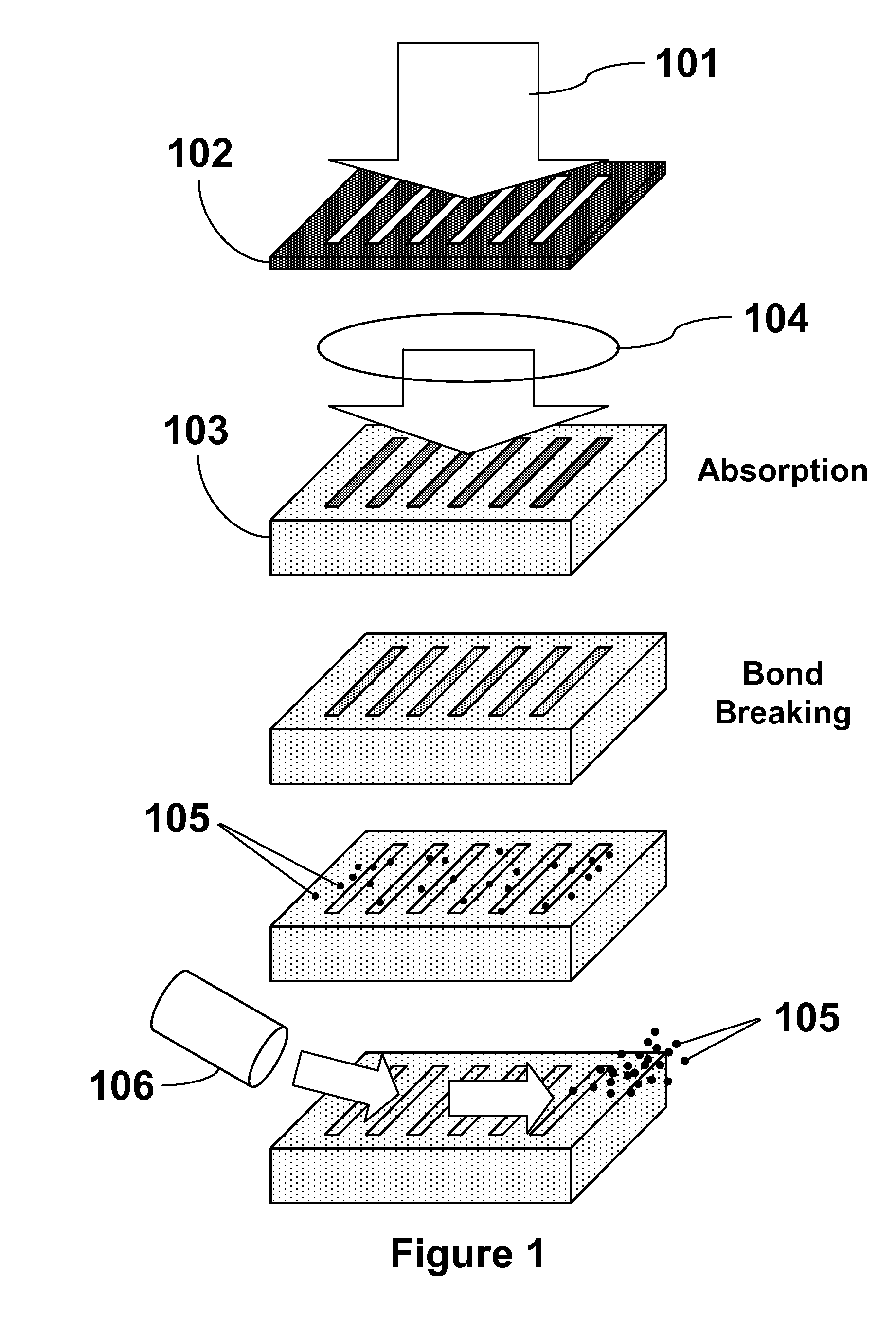Patterning methods for stretchable structures
a technology of stretchable structures and patterning methods, applied in the field of microfabrication processing techniques, can solve problems such as the breakage of long polymer chains by bonding
- Summary
- Abstract
- Description
- Claims
- Application Information
AI Technical Summary
Benefits of technology
Problems solved by technology
Method used
Image
Examples
example 1
Applications of and Processes for Creating Stretchable Structures
[0078]Stretchable, large-area, sensor arrays provide multimodal sensory information about the environment, such as temperature, pressure, strain, and chemical composition. These sensor arrays find applications in aerospace and infrastructure structural health monitoring, tactile sensors for robotics and electronic textiles for patient, soldier, and athlete physical health monitoring. Furthermore, the new fabrication methods described herein for large-area sensors focus on low-cost and reliability, and therefore permit the development of new low-cost sensors for consumer applications.
[0079]Stretchable structures may be used for flexible electronics, display applications, and electronics packaging applications. These applications usually contain multiple layer of interconnects that interface between different chip packages. In these applications, there is a need for robust and conformable electronics for the various appl...
example 2
Stretchable and Flexible Interconnects
[0089]Interconnects relay the signal from a sensor output to the external environment. For sensor skins, because of the large number of elements, it is important to have multiple layers of interconnects. In one embodiment, shown in FIG. 11A, at least two layers of interconnects are present. These layers of interconnects may be perpendicular to each other; one interconnect layer 1101 probes the bottom electrodes of a number capacitive sensors 1102 while the other interconnect layer 1103 probes the top electrodes. The interconnects are arranged in a row / column fashion such that a unique sensor or actuator can be probed by selecting a row and column. It is advantageous to have a high electrical-conductivity interconnect to minimize the time delay between probes and to maximize the sensor throughput; therefore, aluminum is utilized as the interconnect material. High-conductivity metals such as aluminum, gold, and copper are commercially used for int...
example 3
Capacitive Sensors
[0092]Described in this example is a fabrication process embodiment for the fabrication of capacitive sensors. Capacitive sensors have two metal electrodes which can act as in-situ metal masks this fabrication process. Capacitive sensors rely on an environmental factor to change the sensed capacitance. Capacitance is a function of area of the capacitive plates, the distance between the plates, and the dielectric constant of the material between the two plates, so a change of any of these parameters will change the sensed capacitance.
[0093]Several common capacitive sensors are pressure sensors, accelerometers, and temperature / humidity sensors. Pressure sensors work as follows: a force from an applied pressure imparts a stress on the polymer, distorts the diaphragm, and decreases the distance between two capacitive plates which increases the sensed capacitance correspondingly. Likewise, capacitive accelerometers transduce a change in force through a change in the cap...
PUM
| Property | Measurement | Unit |
|---|---|---|
| thickness | aaaaa | aaaaa |
| thickness | aaaaa | aaaaa |
| thickness | aaaaa | aaaaa |
Abstract
Description
Claims
Application Information
 Login to View More
Login to View More - R&D
- Intellectual Property
- Life Sciences
- Materials
- Tech Scout
- Unparalleled Data Quality
- Higher Quality Content
- 60% Fewer Hallucinations
Browse by: Latest US Patents, China's latest patents, Technical Efficacy Thesaurus, Application Domain, Technology Topic, Popular Technical Reports.
© 2025 PatSnap. All rights reserved.Legal|Privacy policy|Modern Slavery Act Transparency Statement|Sitemap|About US| Contact US: help@patsnap.com



